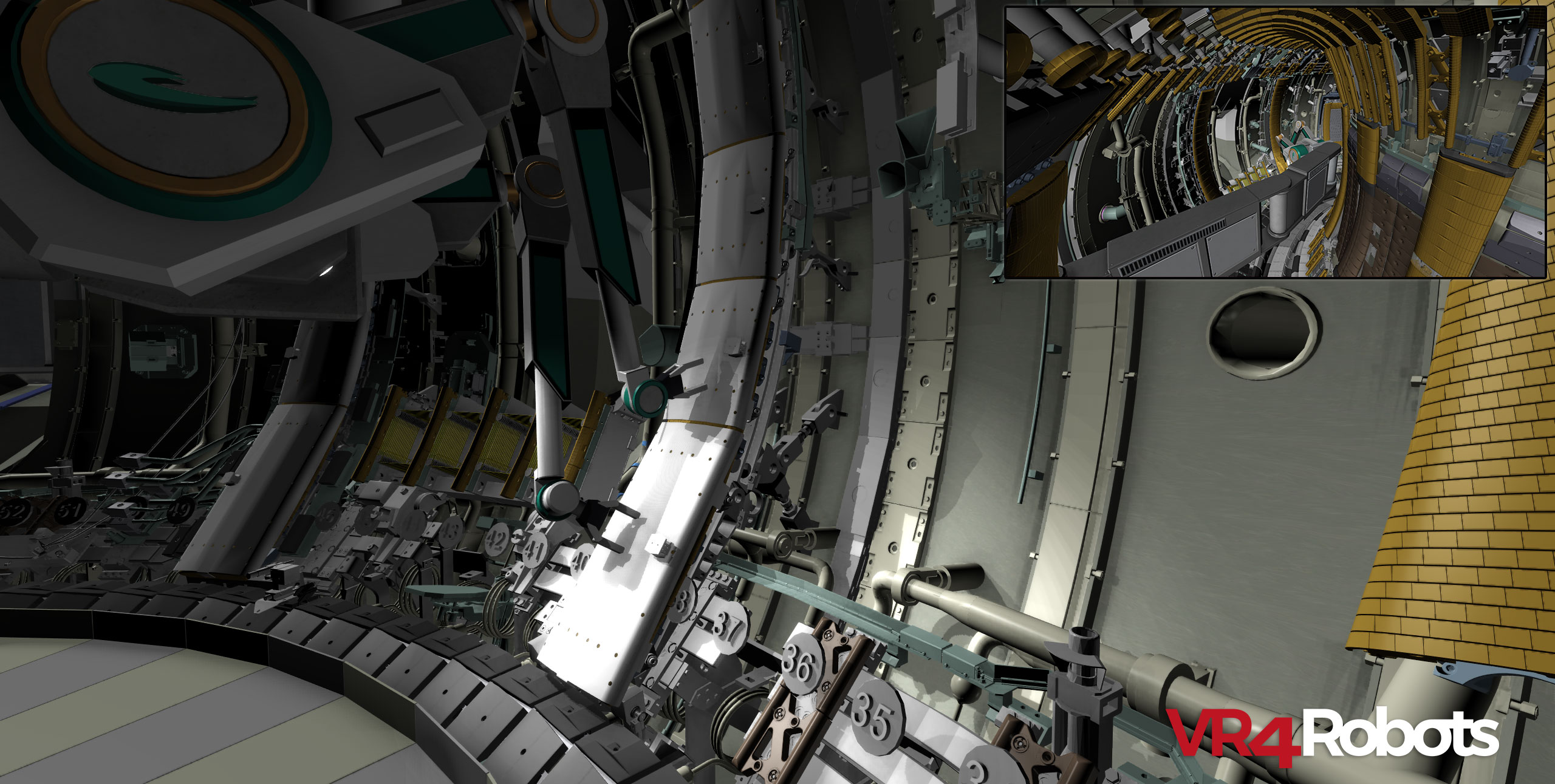Retiina remote handling simulator; a VR4Robots physics-based digital twin of Veolia Nuclear Solutions’ Dexter Remote Manipulator System © Veolia Nuclear Solutions (UK) & Tree C Technology.

Virtual reality guides engineers to perform ITER maintenance works.
Imagine having to repair the biggest fusion device without being able to step inside. Massive pieces of expensive equipment installed with millimetric precision requiring checks; heavy components which may need to be replaced after time, smaller components difficult to reach with no cameras views to do the job. How does one open the doors of ITER, which holds the key to abundant energy, and gets to fix it? Welcome to the universe of virtual reality visualisation, robotics and software working hand in hand from a distance to let engineers to be hands-on with maintenance.
Europe is responsible for three of the ITER Remote Handling systems, which are progressing in parallel, to support experts with the maintenance of the divertor; the neutral beam; the operation and transport of the cask and plugs. Regardless of the specificities of these systems, they will need to operate in a seamless manner with the latest robotics technology and software. After testing various products in the market, and assessing their compatibility with the ITER environment, F4E has selected VR4Robots developed by Tree C Technology. VTT, Finland’s Technical Research Centre, carried out the selection process in collaboration with Bernhard Haist, expert in Remote Handling systems.
The tool, will help engineers to visualise maintenance processes, simulate or perform in real time remote handling operations, and be used by more than one users in parallel. Europe is also aiming at another twinning exercise building a bridge between the Genrobot software, which will introduce a sense of coherence amongst the various interfaces of the system, and VR4Robots, which will help the remote operators to see the exact location of the robotics equipment in the vessel with a real-time refresh rate.
“VR4Robots was originally developed for the interactive visualisation of the remote handling operations in JET. Since then, several ITER Parties have adopted VR4Robots digital twin technology, which is also playing an important role in the decommissioning of nuclear reactors worldwide, like in Fukushima,” explains Gerard Weder, CEO of Tree C Technology B.V. “We are proud that the latest generation of VR4Robots has been selected by F4E, following a thorough evaluation, as the virtual reality system for the remote handling system of the ITER Divertor, and look forward to the collaboration.”
Emilio Ruiz Morales, has been following this subject closely on behalf of F4E. He is the person behind the ambitious plan, to make the various interfaces speak the same language and see with the same pair of eyes. “We needed an efficient and versatile tool to fit the needs of our various systems we are manufacturing. VR4Robots is offering us this flexibility and our ITER counterparts in Japan have opted for the same. Our aim is to test it towards the end of this year in DTP2, Finland, where we have a test facility for the remote handling system of the ITER Divertor,” he explains.
Carlo Damiani, F4E Remote Handling Programme Manager, highlights the importance of this recent development. “It’s amazing and challenging at the same time to develop and deploy all these different technologies for our Remote Handling systems. One day, all of them will work together seamlessly. The operators in the remote handling control room will perform their duties immersed in a reality where virtual and physical objects will interact between them and will allow operators to perform their tasks smoothly and effectively.”
